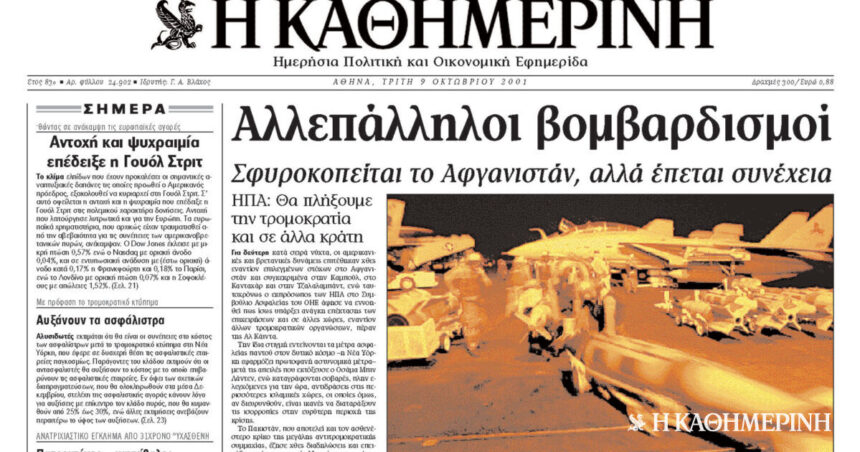Post-Cold War Afghanistan, from 1996 to 2001, was plagued by a civil war, which in fact was a continuation of the war that had begun in 1989 and was essentially connected to the hostilities that had already begun in 1978. Since 1996, the warring groups were of the Northern Alliance (officially known as the United Islamic National Front for the Salvation of Afghanistan), which was a military alliance of groups organized and operated after the capture of Kabul by the Islamic Emirate of Afghanistan (Taliban), with the latter. In 2001, the Taliban controlled about 80% of the country.
The possibility of the attack became clear last month, when on the 11the On September 12, the twin terrorist attack on the Twin Towers of New York took place, with a tragic toll of more than 3,000 victims and more than 6,000 injured. Al-Qaeda, the armed terrorist organization of Islamists that first appeared in 1988, took responsibility for these attacks, and it came from the “Mecta Al-Kitemat”, which was “the central office” of the Afghan Mujahideen.
About a month after the terrorist attack, the United States, together with the United Kingdom, which had been its main ally, offering support for military action, attacked Afghanistan. The goal was the overthrow of the Taliban government and at the same time the dismantling of Al-Qaeda.
On October 7, 2001, the first bombings took place. We read on the front page of “Kathimerini” on the 9thher October: “For the second night in a row, US and British forces attacked selected targets in Afghanistan yesterday, namely Kabul, Kandahar and Jalalabad, while at the same time the US representative to the UN Security Council hinted that there might be a need expansion of operations in other countries, against other terrorist organizations, beyond al-Qaeda. […] The first airstrikes on Sunday evening hit 31 targets and succeeded, according to the Americans, in “clearing the skies of Afghanistan” by neutralizing the Taliban’s air defenses. Bombing is now easier and in the coming days key strikes will be attempted against military positions, with the apparent aim of facilitating the work of the Northern Alliance and overthrowing the Taliban regime as quickly as possible, which will facilitate the capture or killing of Osama Bin Laden “, for which, according to the article, “the risk of developing into a living legend of the Arabs is now real, and much will depend on the speed and effectiveness of operations in Afghanistan.”
However, already since then there was concern not only about the outcome of the “War on Terror” unleashed by President George Bush Jr., but much more “about the collateral international political consequences of the operations”, as emphasized in another article of “Kathimerini” . “In the West’s previous conflicts with countries in the Arab Muslim world – from Suez in 1956 to Iraq in 1990-91 – traditional Islam regularly aligned itself with the West as secular Arab nationalist radicalism posed as its mortal enemy. Today, Bin Laden and the Taliban regime base their anti-American and anti-Western campaign on the most conservative version of Islamic tradition. Thus, the majority of regimes in the Arab Muslim world that would be relieved to see a quick and effective weakening of extreme Islamic fundamentalist challenge would hardly bear the cost of a protracted conflict, much less the opening of other fronts. […] “Key” to the developments is, therefore, for the “Kathimerini” columnist, “the ability of the USA to achieve substantial results in Afghanistan in a short period of time”.
Finally, the addition of 7her October marked the beginning of a 20-year war in Afghanistan. It effectively ended on August 15, 2021, with the Taliban taking over the Afghan capital and the last Americans leaving Afghanistan by the 30th.
Column Editor: Myrto Katsigera, Vassilis Minakakis, Antigone-Despina Poimenidou, Athanasios Syroplakis




